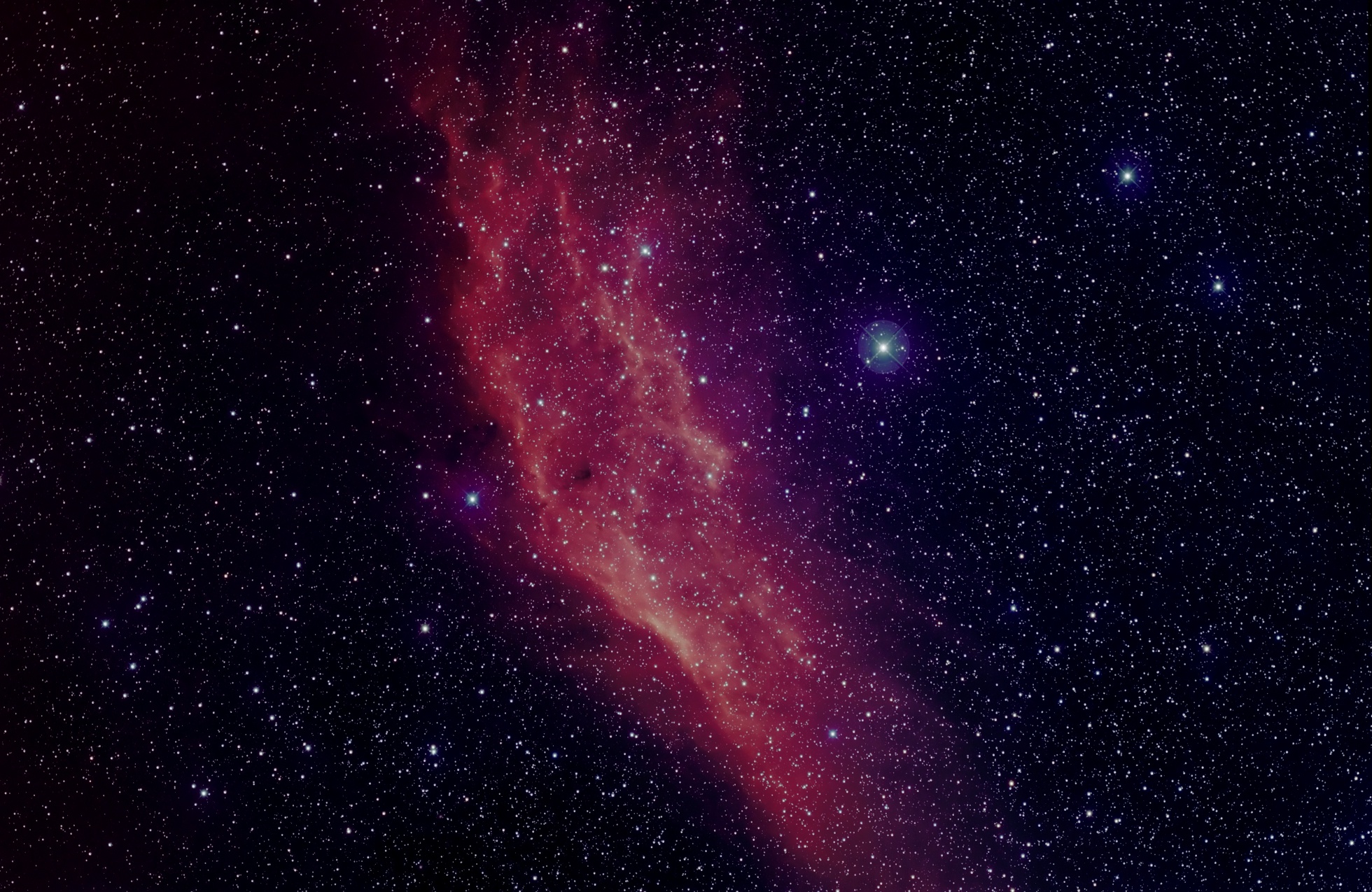
The California Nebula got its name from the fact that it resembles the outline of the State of California. It is a diffuse emission nebula in Perseus. The nebula is spread across an area of the sky that is about 40 arc-minutes by 145 arc-minutes. The nebula has a low surface brightness and is very dim. The California Nebula is a challenge to spot visually. Usually a large telescope, extremely dark skies, and a hydrogen beta filter is required to see it very well. However, it is a great object to photograph, and modern CCD cameras can capture beautiful images of the nebula. Also known as NGC 1499, this nebula was discovered by E.E. Barnard in about 1884 or 1885. At an estimated distance of 1500 light-years, the nebula would occupy an area about 100 light-years long. This cosmic cloud is located in the Orion spiral arm of our Milky Way Galaxy.
This is an LRGB color composite CCD image taken with an SBIG STL-11000M CCD and a Takahashi Epsilon 180ED telescope. The luminance data was taken using an Ha filter from my backyard in Scottsdale, Arizona. The RGB data was taken at the University of Arizona Mount Lemmon SkyCenter.
NGC 1499
Constellation: Perseus
RA: 04h 03m 14s Dec: +36d 21' 33" (J2000)
November 16, 17 & 22, 2009
Image by Sid Leach
Mount Lemmon, Arizona
Recent Images.
Complete list of images.
Description of equipment used to acquire images.
Home
Feedback and comments should go to Sid